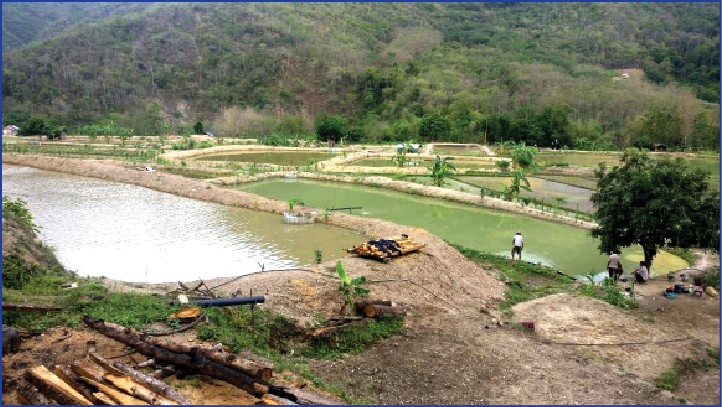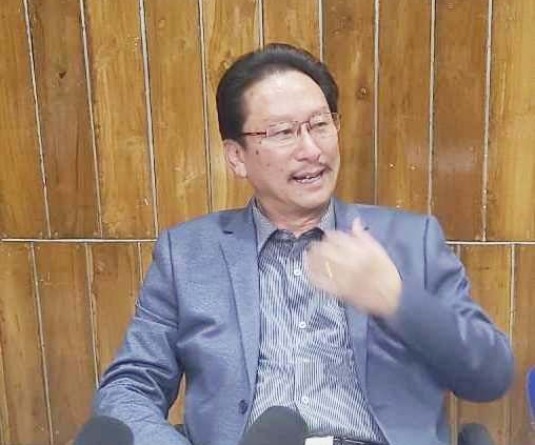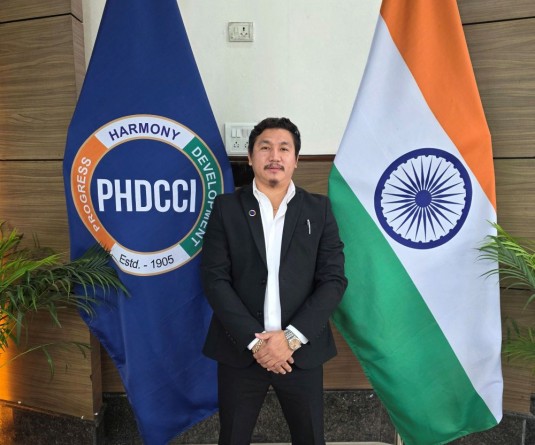
Morung Express News
Kiphire | July 6
Picking the culture of fish has not only generated income but has also given lot of health benefit to the farmers who rear fish.
Tethuyo, a model village for successful implementation of various programs settle over viewing River Zungki, one of the tributaries of Chindwin River. Blessed with abundant fertile valley where farming and agriculture are one of the traditional practices has picked up Pisiciculture along with their traditional agricultural practices.
The village has picked the concept of mix farming from the department of Land Resources when the department constructed few water harvesting structures in the village project areas. Taking advantage of water, the village introduced fish to these water harvesting structures and the rest became history.
Today the village has constructed 44 water harvesting structures with an average of 1 acre per structure where each structure is estimated to have 100-150 kilo of fishes.
Of the 44 structures present in that area, 16 structures are constructed by the department of Land Resources. These structures are filled with fishes which act as an alternative livelihood generation farming.
The harvested product of this water harvesting structures has not hit Kiphire market due to high demand in the village itself and neighboring villages, however, it has fetched lot of economic return and also helps church, social gathering and supporting families, reducing the dependence of imported fish market.
The farmers disclosed that the fish will be available for sale for visitors, may be a few kilos for local consumption in the field anytime from November to February till new fingerlings are replaced.
Sharing on the technique of rearing fish and also the growth from April-October/November, the farmers also said in 100 pieces of fishes around 25 pieces of fishes will weigh 500 gram and the remaining 150-200 gram.
Narrating the indigenous way, farmers said ‘grass crap’ which is supplied by the Land resource department is reared along with ‘Sapean’ local variety which they caught from Zungki River. They observed that while feeding ‘grass crap’ comes to the top of the water to feed, ‘Sapean’ doesn’t come up and feeds mostly on the droppings of ‘grass crap’ which is an additional benefit, disclosed the farmers.
“Other than some predators of the fishery such as kingfishers, cranes, beavers and snakes, there is no other problem faced,” they added.
“The problem with the fisheries is the feeds and the fingerlings after harvest, otherwise there is no problem with rearing of fishes,” narrated a farmer and also said, “We get maximum return of 10-15 tin of paddy which fetch us Rs 2000-3000 whereas fish harvest gives us Rs 15000-20000 on an average from the same land used.”
The rearing of fish has helped farmers get children admitted in schools and also help in social aspects, benefiting the farmers.
Sharing on other prospects in water harvesting structures, the farmers wishes to try prawn along with fish culture in some ponds which they felt will be beneficial.
On an average, an individual will release fingerlings worth Rs 5000 along with free distribution from the department. The harvest will fetch an income of Rs 10000-12000 surplus over expenditure, they disclosed and also expressed gratitude to the Land Resources department for extending all possible help so far.





